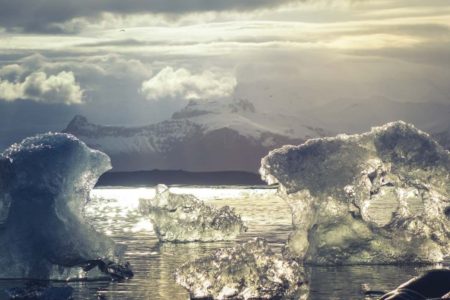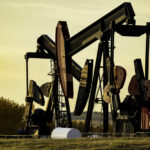September 25, 2019 – I can already hear the conservative and energy industry pundits calling this latest United Nations report released today and entitled, “Special Report on the Ocean and Cryosphere in a Changing Climate,” as a case of mass hysteria on the subject of climate change. Reading the report, however, paints a disturbing picture of scientific observations made over the period from 1950 to the present.
The report was prepared as a special assignment for the IPCC to provide greater details on cryosphere and ocean impacts and to provide advice for nations to develop coherent climate policy based on scientific evidence.
Why was this report needed? Because, as it states, “all people on Earth depend directly or indirectly on the ocean and cryosphere.”
The world’s oceans cover 71% of the planet surface and contain 97% of its water. The cryosphere, the areas that are ice and snow-bound, cover 10% of the world’s landmass. They are inextricably linked through a “global exchange of water, energy, and carbon.”
How are we impacted by changes to the ocean and cryosphere?
- 680 million of us live along coastlines.
- 670 million live in proximity to alpine regions where there are mountain glaciers and snowpacks
- 4 million live in the Arctic of which 10% are Indigenous peoples.
The report notes that since the mid-20th century, the shrinking cryosphere in the Arctic and in alpine areas has led to negative impacts on food security, water resources, water quality, livelihoods, health and well-being, infrastructure, transportation, tourism, and recreation, as well as culture of human societies, particularly for Indigenous peoples. The costs and benefits are unequally distributed across populations and regions.
So exactly what has been observed?
- in “the last decades, global warming has led to widespread shrinking of the cryosphere” and the warming of the ocean “unabated since 1970” noting the ocean’s role in taking up “more than 90% of the excess heat in the climate system,” and 20 to 30% of total human-generated carbon dioxide (CO2) emissions since 1980.
- absorption of the CO2 has led to a more than doubling of the ocean’s warming rate plus an increase in ocean surface acidification, and “a loss of oxygen” which “has occurred from the surface to 1,000 meters” below.
- an increase in marine heatwaves defined as “when the daily sea surface temperature exceeds the local 99th percentile over the period 1982 to 2016,” noting a doubling in their frequency and extensiveness including El Nino and La Nina events.
- a weakening of the heat distribution conveyor belt, known as the Atlantic Meridional Overturning Circulation, that redistributes heat from the tropics to the poles with unknown consequences for global weather.
- a change in the density of the ocean’s first 200 meters from increasing amounts of freshwater melt off continental ice masses.
- an alteration of the ocean’s pH balance by as much 0.027 since the late 1980s over 95% of its surface area.
On the issue of sea-level rise, the report notes the following observations.
- the rise is not uniform with it being greater in areas where human activity such as groundwater extraction is leading to seawater penetration into local aquifers.
- the mean rise is accelerating over the last few decades from the loss of continental ice and through ocean thermal expansion.
- increases in tropical cyclone intensity, not frequency, with an increase “in annual global proportion of Category 4 or 5 tropical cyclones.”
- increases in frequency of extreme waves in the open ocean, most notable in the Arctic from sea ice loss, and from altered wind conditions over a warming ocean surface.
- increases in coastal erosion and flooding.
The cryosphere impact on ecosystems observations include:
- an alteration in plant and animal species in high altitude and polar regions as biology shifts to take advantage of less snow and ice in these areas.
- a notable decline in cold and snow-dependent species as their natural environment shrinks.
- altered seasonal migration patterns both vertically and latitudinally.
- increased permafrost thaws altering Arctic vegetation (a noted greening observable from satellites) upon which existing native species depend.
- increased incidents of wildfires in polar and high-mountain areas with the thawing and drying out of surface biomass.
The ocean impact on ecosystems observations include:
- a poleward shift in the geographical range of marine species since the 1950s at a rate of 33 kilometers per decade in the upper 200 meters including a migration of seagrass meadows and kelp forests to higher latitudes.
- a poleward shift in the geographical range of marine seafloor ecosystems amounting to an average of 16 kilometers per decade.
- rates of shift in addition are being shaped by local temperature conditions, changes to oxygen levels, and alterations in currents both at the surface and in the water column.
- a non-uniform negative impact on ecosystems from changes in acidification and from oxygen loss leading to reduced fishery catches in some areas.
- a poleward shift of ocean species increasing abundance in some areas with a noted change in the composition of fishery catches since the 1970s.
- negative coastal impacts on biology from acidification, saltwater intrusion into aquifers, and shoreline erosion.
- a loss of nearly 50% of coastal wetlands and mangroves from human re-engineering over the past 100 years making remaining areas more susceptible to climate change impacts.
- an increase in seawater intrusion into river estuaries leading to migration of freshwater species upstream and increases in marine species downstream.
- changes in oxygenation and acidification creating algae blooms.
- a negative impact on warm-water coral reefs with large-scale coral bleaching events increasing in frequency leading to “worldwide reef degradation since 1997.”
Enabling climate resilience and sustainable development will depend critically on urgent and ambitious emissions reductions states the report, coupled with coordinated sustained and increasingly ambitious adaptation actions.
The report states, “Key enablers for implementing effective responses to climate-related changes in the ocean and cryosphere include intensifying cooperation and coordination among governing authorities across spatial scales and planning horizons. Education and climate literacy, monitoring and forecasting, use of all available knowledge sources, sharing of data, information and knowledge, finance, addressing social vulnerability and equity, and institutional support are also essential. Such investments enable capacity-building, social learning, and participation in context-specific adaptation, as well as the negotiation of trade-offs and realization of co-benefits in reducing short-term risks and building long-term resilience and sustainability.”
The report concludes that it “reflects the state of science for ocean and cryosphere for low levels of global warming (1.5°C), as also assessed in earlier IPCC and IPBES reports.”
















